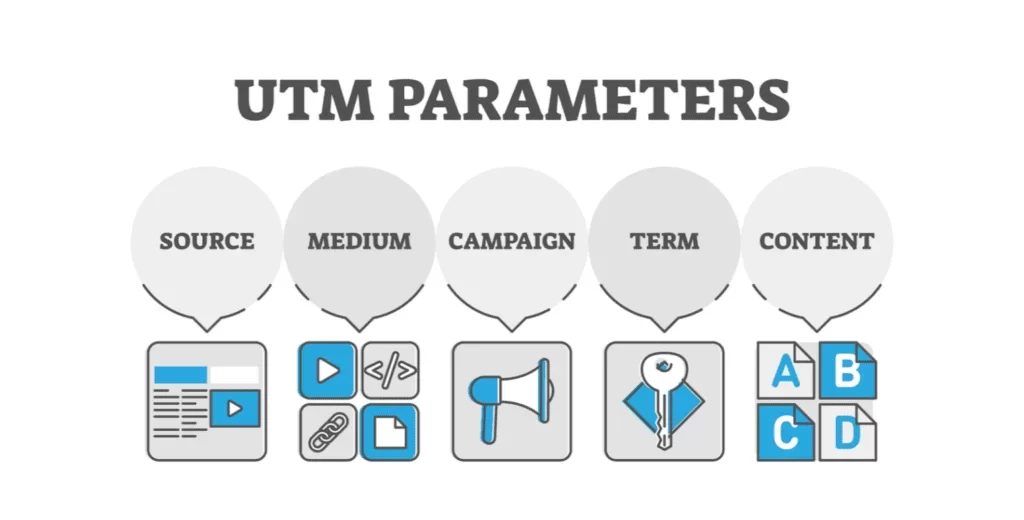A Beginners Guide to UTM Parameters (And How to Use Them)
Welcome to the exciting world of UTM parameters! If you’ve ever wondered how to track the performance of your URLs or campaigns, then you’re in the right place. In this beginner’s guide, we’ll walk you through everything you need to know about UTM parameters and how they can help supercharge your tracking efforts. Whether you’re a marketer, business owner, or social media enthusiast, understanding UTM parameters will unlock valuable insights and empower you to optimize your online presence. So let’s dive in and discover the magic behind these little snippets of code that hold big potential for measuring success!
What are UTM Parameters?
What are UTM Parameters?
UTM parameters, also known as Urchin Tracking Module parameters, are tags that you can add to your URLs to track the effectiveness of your marketing campaigns. They allow you to gather valuable data about the source, medium, and other details of incoming traffic. By appending specific UTM parameters to your URL links, you can easily identify which channels or platforms are driving the most engagement and conversions.
The beauty of UTM parameters lies in their simplicity and flexibility. Each parameter consists of a key-value pair separated by an equals sign. The main UTM parameters include utm_source (identifies the referring website), utm_medium (specifies the marketing medium), and utm_campaign (names the specific campaign). Additionally, there are optional ones like utm_term (tracks keywords) and utm_content (differentiates between variations within a campaign).
For example, let’s say you’re running a Facebook ad campaign for your new product launch. You can use UTM parameters to differentiate between ads placed on different pages or even target audiences within Facebook itself! This level of granularity allows for precise tracking and analysis.
By customizing these UTM parameters for each promotional link across various channels such as social media posts, email newsletters, or blog articles – you’ll have access to granular insights into user behavior on your website.
UTM parameters provide an effective way to measure the success of different marketing efforts by attributing traffic back to its original source. With this information at hand, businesses can make informed decisions about where they should focus their resources for optimal yield from their campaigns.
How to Use UTM Parameters
How to Use UTM Parameters
Using UTM parameters is a simple yet powerful way to track the effectiveness of your marketing campaigns. By adding specific tags to the URLs you share, you can gather valuable data about where your traffic is coming from and how users are interacting with your content.
To start using UTM parameters, you’ll need to include them in the URL of each link you want to track. The basic structure consists of five key elements: utm_source, utm_medium, utm_campaign, utm_term (optional), and utm_content (optional). These parameters allow you to identify the source of your traffic (e.g., social media platforms), the medium used (e.g., email or banner ads), and even specific campaign names or keywords.
For example, let’s say you’re running a promotional campaign on Facebook for a new product launch. You could add “utm_source=facebook” and “utm_medium=social” to the end of your URL when sharing it on Facebook. This will enable you to see exactly how many clicks and conversions were generated from that particular campaign.
By consistently using UTM parameters across different channels and campaigns, you can gain insights into which strategies are yielding the best results. This information allows you to make data-driven decisions about optimizing future campaigns for maximum impact.
In addition, UTM tracking gives marketers more accurate reporting on ROI by providing details on not only click-through rates but also conversion rates based on various sources or mediums. Armed with this knowledge, businesses can allocate their resources more effectively by focusing on higher-performing channels while reducing investment in underperforming ones.
To easily track your UTM parameters’ performance without getting lost in spreadsheets full of confusing data, there are several tools available such as Google Analytics. These tools provide user-friendly dashboards that display clear metrics like session duration, bounce rate, goal completions attributed to specific UTMs – making it effortless to analyze and optimize your marketing efforts.
Using UTM parameters is
What are the Benefits of Using UTM Parameters?
Benefits of Using UTM Parameters
Using UTM parameters in your URLs can provide numerous benefits for tracking and analyzing marketing campaigns. Here are some key advantages:
1. Accurate Campaign Tracking: With UTM parameters, you can easily track the effectiveness of different marketing campaigns or channels. By assigning unique parameters to each campaign, you’ll know exactly which sources are driving traffic and conversions.
2. Granular Data Analysis: UTM parameters allow you to gather detailed data on specific elements within your marketing strategy. You can analyze which social media platforms, emails, or ads generate the most engagement or conversions, helping you make informed decisions about where to invest your resources.
3. Enhanced ROI Measurement: By accurately tracking campaign performance with UTM parameters, you gain insights into the return on investment (ROI) for each channel or campaign. This knowledge enables you to allocate your budget effectively and focus on strategies that yield better results.
4. Customized Reporting: The data collected through UTM parameters allows for customized reporting tailored to your specific goals and metrics. You can create reports that highlight the success of individual campaigns or compare different channels side by side.
5. Optimized Marketing Strategies: Armed with accurate data from UTM parameter tracking, you can refine and optimize your marketing strategies continuously. Identify underperforming campaigns and adjust them accordingly while capitalizing on successful ones.
In conclusion,
UTM parameters offer invaluable advantages when it comes to tracking the effectiveness of various marketing efforts across multiple platforms and channels online
How to Track Your UTM Parameters
Tracking your UTM parameters is crucial to understanding the effectiveness of your marketing campaigns. Luckily, there are several tools available that can help you easily track and analyze this data.
One popular option is Google Analytics, which allows you to set up custom reports and view detailed insights into how your UTM parameters are performing. With Google Analytics, you can track metrics such as clicks, conversions, and revenue generated from each campaign.
Another useful tool for tracking UTM parameters is Bitly. This URL shortening service not only creates shortened links but also provides analytics on click-through rates and engagement for each link. This information can be valuable in determining which campaigns are driving the most traffic and conversions.
Additionally, many social media management platforms offer built-in UTM tracking capabilities. These platforms allow you to schedule posts across multiple channels while automatically appending UTM parameters to the URLs. This makes it easy to see the performance of different social media campaigns in one place.
By consistently tracking your UTM parameters across various marketing channels, you can gain valuable insights into what’s working and what needs improvement. Use these insights to optimize future campaigns and allocate resources effectively for maximum impact.
Conclusion
Conclusion
In today’s digital landscape, tracking the success of your online campaigns is more important than ever. UTM parameters provide a simple and effective way to gain valuable insights into your marketing efforts. By adding these unique tags to your URLs, you can easily track where your traffic is coming from and measure the impact of each campaign.
Remember, when using UTM parameters, it’s crucial to be consistent with naming conventions and values. This will ensure accurate data collection and analysis. Additionally, regularly reviewing your analytics will help you identify trends, optimize future campaigns, and ultimately improve your ROI.
So don’t let valuable information slip through the cracks! Start implementing UTM parameters today and unlock a wealth of data that will empower you to make informed decisions about your marketing strategies. With this beginner’s guide in hand, you’re well on your way to becoming an expert in tracking URL performance.
Happy tracking!















